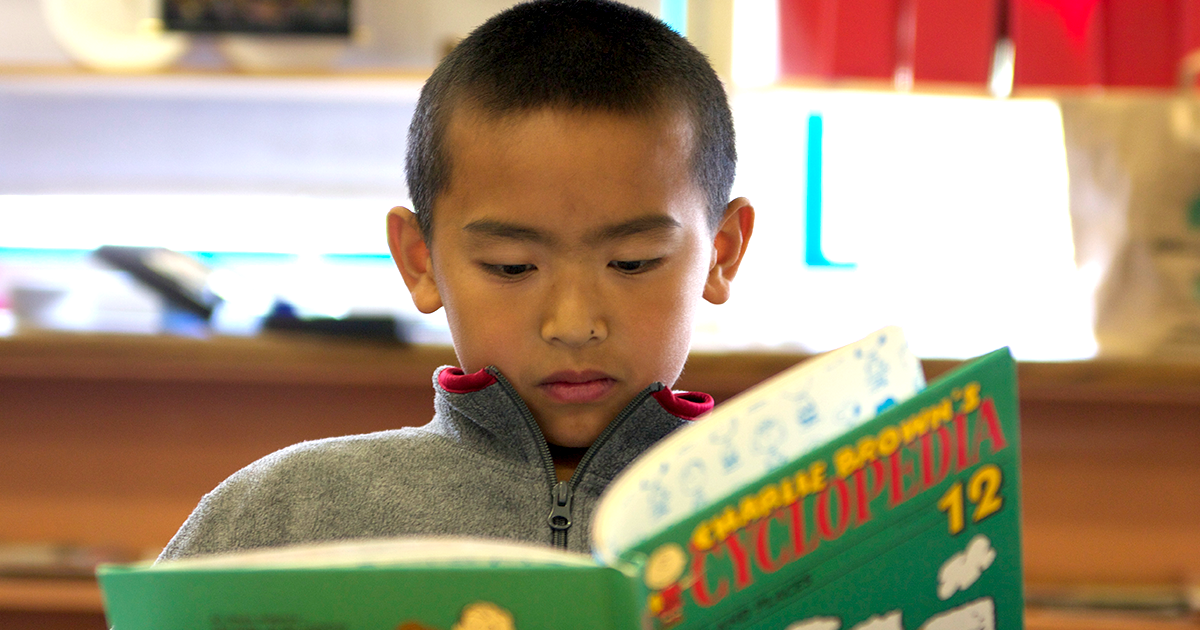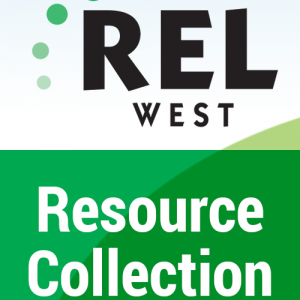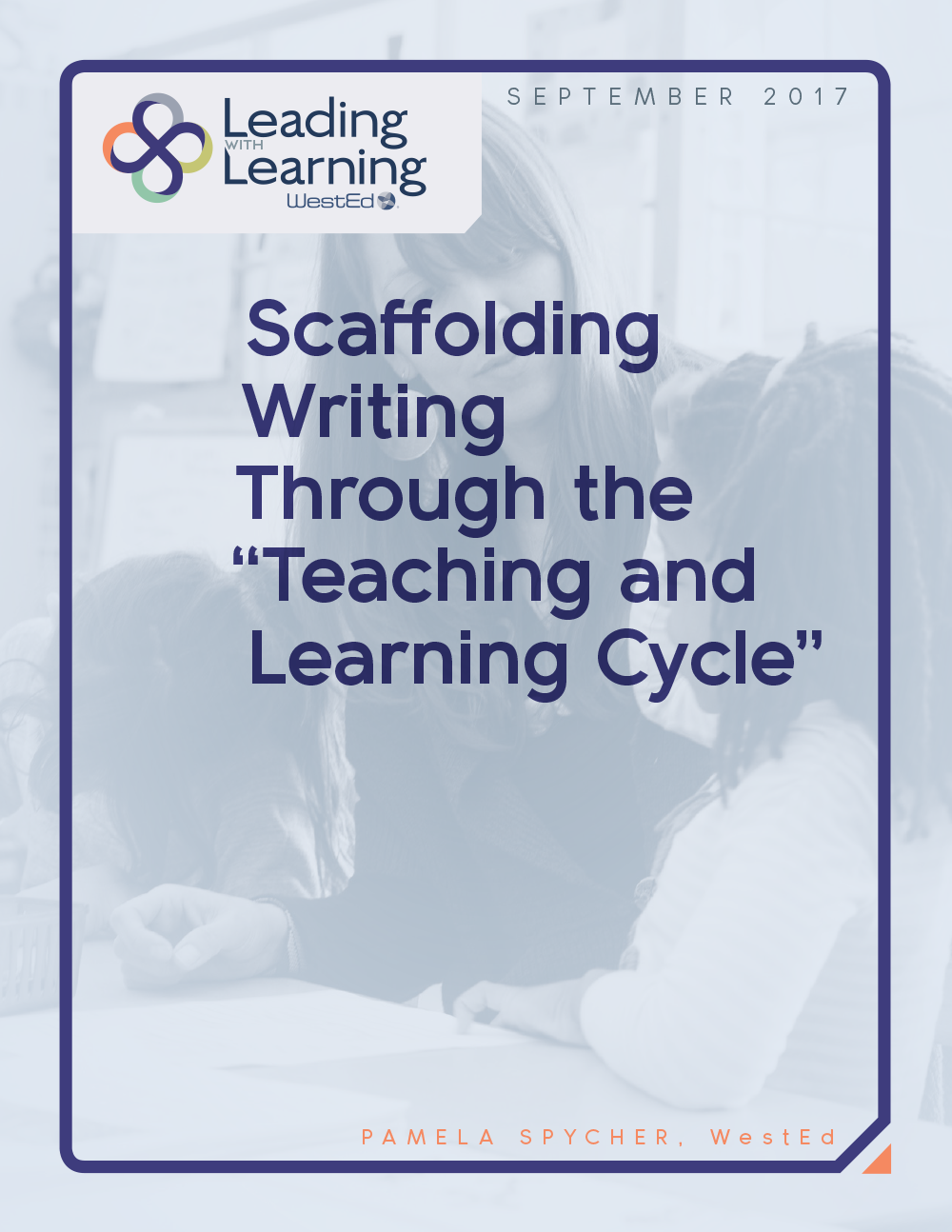The Science of Reading: The Importance of Comprehension
Posted on

By Dennis Ciancio, Senior Research Associate at WestEd. Ciancio is a developmental psychologist who specializes in literacy interventions for children and formative assessment of reading skills in classroom settings. This post first appeared on the REL West blog and is posted here with permission.
What Is the Science of Reading?
Just as biology is the scientific study of living organisms or chemistry is the scientific study of elements and compounds, the science of reading refers to a body of research about how people learn to read. The research is extensive dating back over 100 years and includes research from many disciplines, such as cognitive science, developmental psychology, educational psychology, neuroscience, linguistics, and others.
The science of reading combines both theoretical models and empirical studies of how people learn to read. Theoretical models summarize what we know (and what we don’t know) based on evidence from empirical studies and are useful in testing new approaches or developing effective instructional materials. The research is rigorous and replicable, not based on opinion.
It is important to note that the science of reading is not a product, curriculum, or singular method of teaching, such as teaching phonics. Rather, it encompasses rigorous study of the processes our brains use to learn to read, what skills are necessary for reading, how those skills develop over time, and how they can be taught to all students effectively.
Importance of Comprehension in the Science of Reading
Strong reading comprehension skills are necessary across nearly all aspects of education and learning. While theoretical models of reading development vary in complexity and detail, all models of reading include one’s ability to understand what is read or the comprehension of text. For example, one theory of reading, the Simple View of Reading,i shows how recognizing words in print (word recognition) and understanding the language used (language comprehension) work together to lead to reading comprehension.
Other models, such as the Reading Rope modelii or the Active Model of Readingiii have expanded word recognition and language comprehension components into several important subcomponents, noting how they work together to lead to skilled reading and text comprehension. Other models of reading comprehension, such as the Lattice Model,iv include additional linguistic, social-cognitive, and contextual factors that influence how reading comprehension develops.
Seminal work in the science of reading includes efforts by experts across multiple disciplines. The report of the National Reading Panelv summarized more than 100,000 research studies about effective ways to teach children to read including emphasis on alphabetics, reading fluency, and reading comprehension. The Reading for Understanding Research Initiative created by the Institute of Education Sciences (IES) developed effective approaches for improving reading comprehension for all students and by 2016 had produced over 200 publications.vi This is the kind of work embodied by the science of reading.
Resources for Reading Comprehension
Since 2006, IES has issued 29 practice guides through the What Works Clearinghouse (WWC) that summarize research and present recommendations for educators to address challenges in their classrooms and schools. Nine guides (listed below) are focused on supporting teachers in providing effective instruction in reading and literacy.
WWC Practice Guides on Instruction in Reading and Literacy
- Effective Literacy and English Language Instruction for English Learners in the Elementary Grades
- Improving Adolescent Literacy: Effective Classroom and Intervention Practices
- Assisting Students Struggling with Reading: Response to Intervention (RtI) and Multi-Tier Intervention in the Primary Grades
- Improving Reading Comprehension in Kindergarten Through 3rd Grade
- Teaching Academic Content and Literacy to English Learners in Elementary and Middle School
- Foundational Skills to Support Reading for Understanding in Kindergarten Through 3rd Grade
- Providing Reading Interventions for Students in Grades 4–9
- Teaching Elementary School Students to Be Effective Writers
- Teaching Secondary Students to Write Effectively
REL West is adding to this collection with a toolkit to support K–3 reading comprehension. In collaboration with educators in the Dysart Unified School District in Arizona, REL West is currently developing this toolkit to help educators implement the recommendations in the Improving Reading Comprehension in Kindergarten Through 3rd Grade practice guide.
This comprehensive toolkit will include resources and supports to help teachers implement the practice guide recommendations to improve student reading comprehension. After it is usability tested with a small group of educators, it will also go through a peer review process to ensure it both represents the evidence-based recommendations in the practice guide and is practical for educator use.
Starting in fall 2024 the toolkit will then undergo a rigorous study to test the impact of the toolkit on teacher practice and student literacy outcomes. The anticipated timeline for release of this toolkit is fall 2025. We will keep you posted as we approach its release. In the meantime, we will continue to share evidence-based strategies that empower educators and support students to achieve reading proficiency.
Notes
i Gough, P. B., & Tunmer, W. E. (1986). Decoding, reading, and reading disability. Remedial and Special Education, 7(1), 6–10.
ii Scarborough, H. S. (2001). Connecting early language and literacy to later reading (dis)abilities: Evidence, theory, and practice. In S. Neuman & D. Dickinson (Eds.), Handbook for research in early literacy (pp. 97–110). Guilford Press.
iii Duke, N. K., & Cartwright, K. B. (2021). The science of reading progresses: Communicating advances beyond the simple view of reading. Reading Research Quarterly, 56, S25–S44.
iv Connor C. M. (2016). A lattice model of the development of reading comprehension. Child Development Perspectives, 10(4), 269–274. https://doi.org/10.1111/cdep.
v National Institute of Child Health and Human Development. (2000). Report of the National Reading Panel: Teaching children to read: An evidence-based assessment of the scientific research literature on reading and its implications for reading instruction: Reports of the subgroups (NIH publication No. 00-4754). U.S. Government Printing Office.
vi Pearson, P. D., Palincsar, A. S., Biancarosa, G., & Berman, A. I. (Eds.). (2020). Reaping the rewards of the Reading for Understanding initiative. Washington, DC: National Academy of Education.


